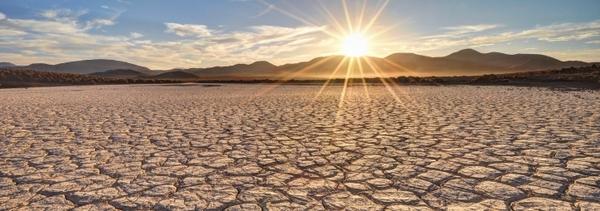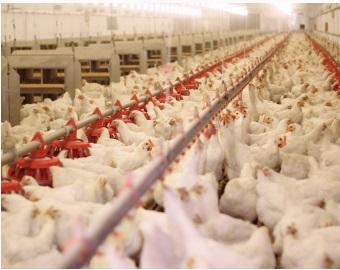
Content sponsored by:
LIPTOSA
Heat Stress
Published: July 26, 2021
By: Ewa Sujka, Commercial Director

Thermal stress happens when the animal leaves its thermal comfort zone, it means neither too cold nor too hot, let's say it feels good. In both of the cases, the stress due to heat and cold, the problem itself is not the temperature alone, but its relation to relative humidity level.
The differences in sensitivity for each species must be taken into account. Cows cope better with high temperatures with low relative humidity, as they can dissipate their body heat more effectively by sweating. Pigs and poultry do not have sweat glands, therefore the pathway for thermoregulation by evaporation is limited. However, which is an advantage for cattle in low humidity climates, it may become a handicap, since high relative humidity in hot weather will put the animal under stress much faster than pigs or chickens.
Heat stress triggers several physiological and metabolic processes that aim to cool the body, but which negatively affect various defense mechanisms of the animal. To help the animal get rid of excess heat, the organism redirects the visceral blood towards peripheral circulation, reducing blood flow and oxygenation. Therefore, the intestine motility and digestion process is slowing down, the appetite and feed intake got reduced, and appears the risk of digestive disorders. Increased cellular energy demand for thermoregulation promotes the appearance of reactive forms of oxygen (ROS) in high quantity, impossible to be neutralized by the body itself, which generates oxidative stress.
All zootechnical performance parameters will suffer, since feed consumption decreases, while energy expenditure increases.

Poultry – chickens and hens exposed to high temperatures, defend from excess heat by lifting and flapping their wings, a phenomenon called panting. While punctual and slow panting does not put the animal at risk, its excess can become dangerous. Increased muscle activity rises the demand and consumption of energy, what aggravates oxidative stress, higher intensity of breathing allows greater loss of heat by evaporation but also yields in the loss of CO2, increasing blood pH and generating respiratory alkalosis. Depletion of potassium and phosphorus reserves in the blood and increases the concentration of sodium and chloride.
Pigs – While piglets are very sensitive to low temperatures, other productive groups such as growers, fatteners and breeding animals are very sensitive to high temperatures and heat stress. Pigs do not have sufficiently developed sweat glands to help in thermoregulation processes, the defense mechanism against high temperatures is mainly based on voluntary reduction in feed consumption and increased respiratory rate.

Cattle – the decrease in feed consumption as a reaction to heat stress aggravates metabolic disorders. Lower volume of feed ingested will reduce ruminal activity and deepen the nutritional and energy deficit that causes ketosis. On the other hand, intensified respiration increases the risk of respiratory alkalosis and acid-base imbalance.

Most of the corrective measures to reduce heat stress include environmental control of temperature, humidity, ventilation. Considering feeding management is recommended to offer the feed early in the moments of the day when the temperatures are low (early morning, late evening), and adjust the feed formulation. Diets shall be more concentrated in energy, with a reduced protein level that will be compensated with an adequate supply of amino acids, also are remanded feed supplements that allow to correct the electrolyte imbalance.
From LIPTOSA we launch several of nutritional proposals, that help mitigate heat stress and related production drops.
Considering water as a nourishment, we suggest to choose this route of supplementation as the most appropriate in hot climates. For all livestock species we propose a HYGEN PRO® RESPIR FRESH: liquid supplementary feed composed by botanical compounds, vitamins and monoglycerides of fatty acids. Essential oils of peppermint and eucalyptus give cooling properties by acting on the so call receptors of cold, and they also help regain appetite. In addition, thanks to their antioxidant properties, they contribute to the neutralization of free radicals, generated as the response to oxidative stress
To recover animals seriously affected by high temperatures and to restore electrolyte balance, we propose the use of HIDRALIP®: a rehydrating agent enriched with betaine used for correction of cellular osmotic pressure. Extra glucose supply provides the animal with the necessary energy so important after days of reduced feed intake.

Thinking about the specific needs of laying hens and poultry breeders, our proposal is based on the product OSSIFORTE: liquid supplementary feed rich in calcium and phosphorus. A formulation that allows to alleviate the problem of respiratory alkalosis and restore the correct metabolism of calcium what yields in eggshell quality improvement. In addition, thanks to its acidifying properties, it has a beneficial effect on intestinal health.
Nutrition is one of the fundamental corrective measures since it allows to mitigate the effects of heat stress; they should consider both formulation adjustments and supplementation via drinking water. Helping the animal in thermoregulation and mitigating the effects of the stress generated, will allow to minimize the productive losses in the short and medium term.
For those professionals looking for solutions to incorporate into feed, we recommend the use of DIGESTFAST®: a combination of botanical extracts with a beneficial effect on lipid metabolism and hydrolyzed lecithin. Thanks to its emulsifying capacity and improvements in fat digestibility, it allows to manufacture more concentrated diets with equilibrated energy: protein ratio.
Related topics:
Authors:
Elanco
Influencers who recommended :
Oyedele Oyewumi, Ana Gavrӑu and 1 moreRecommend
Comment
Share
Indbro Research & Breeding Farms
4 de enero de 2022
Nothing can be better than controlling the house temperature
Spray water with foggers in dry weather.
Add airmovement with fans if weather is also humid.
Tunnel ventilation with cooling pads and exhausts in a house whose sides are closed.
Recommend
Reply
Barentz
29 de agosto de 2021
"Essential oils of peppermint and eucalyptus give cooling properties by acting on the so call receptors of cold" Can you please describe the physiological process?
Recommend
Reply
7 de septiembre de 2021
Practically, I learned that birds that are on deep litter system enjoy more during hot season that those in the battery cage system.
This is evidently proven because the saw dust on the floor conserves moisture which dramatically birds do lie upon.
Recommend
Reply
7 de septiembre de 2021
Essential oil like peppermint oil or eucalyptus do possess to treat systemic dyspepsia by relieving pain cropped up in GI tract through IBS though they have little effect to address abdominal colic like covered by Simithicone. Hence your declaration demands further study to draw a conclusion on their true efficacy. Above all, they are from extraction from herbal leaf only and more prudent to obtain relief from pain superficially especially on muscles and ligaments.
Recommend
Reply

Would you like to discuss another topic? Create a new post to engage with experts in the community.




